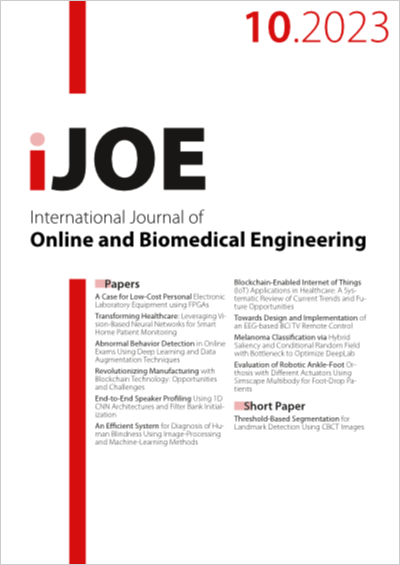Melanoma Classification via Hybrid Saliency and Conditional Random Field with Bottleneck to Optimize DeepLab
DOI:
https://doi.org/10.3991/ijoe.v19i10.39721Keywords:
saliency, Conditional random field, Bottleneck, Atrous convolutional, Deeplab, Segmentation, ClassificationAbstract
Neural networks overcome drawbacks of vision tasks by becoming convolutional in a wide range of layers. The salient map is affected by multilevels of strong pixels (superpixels) in global images and that is dependent on the hard threshold for their dividing. Deep neural networks have been established for saliency prediction of segmentation because the feature extraction must be suited to the input data. The convolutional neural network (CNN) also endures conflict between spatial pattern and a likeness of salient objects. Semantic segmentation is one of the approaches to continue classification based on these features. Therefore, upgrading the extraction process can be of use in saliency. In this work, we optimize DeepLab based on an atrous convolutional and a conditional random field (CRF) with a bottleneck in the semantic segmentation method, which serves for classification. The backbone of deep feature extraction is atrous convolution and the bottleneck based on CRF for hybrid saliency in the encoder-decoder system. The classification results are compared with some approaches for saliency prediction of recent deeper methods in an ISIC 2017 dataset. The results give better values not only for saliency prediction for segmentation but also for training and testing for classification.
Downloads
Published
How to Cite
Issue
Section
License
Copyright (c) 2023 Nguyen Thanh Binh, Vo Thi Hong Tuyet

This work is licensed under a Creative Commons Attribution 4.0 International License.



